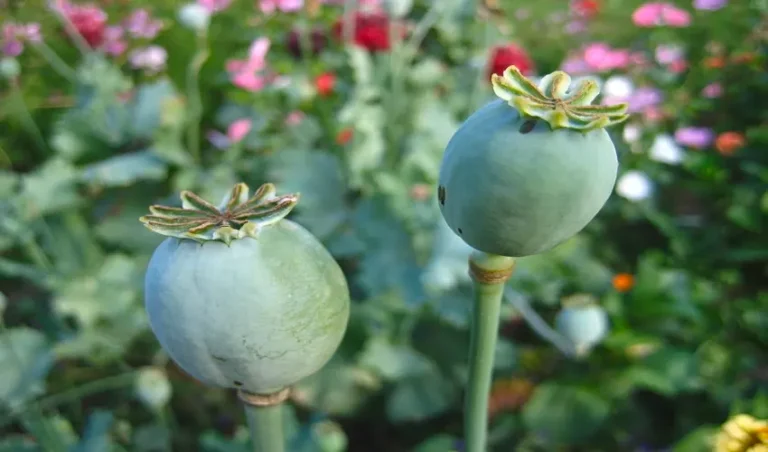Poppy pods, with their delicate beauty and striking appearance, have held significant symbolic meanings throughout history. These seed pods, often associated with the opium poppy (Papaver somniferum), are not just visual marvels; they also carry profound cultural, religious, and historical connotations. In this article, we delve into the multifaceted symbolism of poppy pods and explore their diverse roles in various societies over time.
The Early Origins of Poppy Symbolism
The symbolism of poppy pods can be traced back to ancient civilizations. The poppy flower’s vibrant red petals have long been admired for their beauty, but it is the seed pods, once they have ripened, that have been imbued with deeper meanings. In ancient Egypt, the opium poppy was considered a symbol of both fertility and death. The pod, with its ability to produce a potent substance, was often linked to cycles of life, death, and rebirth, reflecting the Egyptians’ complex understanding of the afterlife.
Similarly, in Greek and Roman cultures, poppy pods were symbols of sleep and death, primarily due to their association with opium. The Greek goddess of sleep, Hypnos, and his Roman counterpart, Somnus, were often depicted holding poppy pods, emphasizing their connection to the world of dreams and the unconscious. This association persists in modern depictions of sleep, where the poppy continues to symbolize rest or escape from reality.
Poppy Pods as Symbols of Remembrance
One of the most powerful symbols of Dried poppy pods for sale comes from their role in commemorating war and sacrifice. In the aftermath of World War I, the poppy became a symbol of remembrance, especially in Western countries. The famous poem “In Flanders Fields” by John McCrae, written during the war, describes how red poppies grew amidst the graves of fallen soldiers in Belgium, symbolizing the lives lost in battle. The red poppy has since become synonymous with remembrance for soldiers who died in war, especially on Remembrance Day (Veterans Day) observed in the United Kingdom, Canada, and other Commonwealth countries.
The Royal British Legion adopted the red poppy as a symbol for fundraising and awareness, solidifying the flower’s role as a poignant reminder of war and sacrifice. This use of the poppy in remembrance is still widely recognized today, making the pod a prominent emblem of the cost of conflict and the importance of honoring those who serve in the military.
Poppy Pods in Literature and Art
Throughout history, artists and writers have utilized poppy pods in their works to symbolize a range of themes, from peace to tragedy. In literature, poppy pods often appear as metaphors for the fleeting nature of life or the allure of oblivion. In William Blake’s famous poem “The Sick Rose,” the image of a “dark secret love” is symbolized by the poppy, representing both destruction and seduction.
In visual art, poppies are equally significant. The Impressionist painter Claude Monet, for example, frequently included poppies in his works, representing tranquility and beauty in the natural world. Poppy pods themselves are sometimes portrayed as symbols of life’s impermanence and the passage of time, often accentuated by their delicate structure and the fragility of the seeds they contain.
The Opium Connection: Poppy Pods and Their Role in Medicine
A darker, more controversial aspect of poppy pods is their connection to opium. For centuries, the opium poppy has been cultivated for its narcotic properties, which have played a significant role in the history of medicine and trade. Opium, derived from the latex of the poppy pod, was once a vital ingredient in medicinal treatments, providing pain relief and serving as an anesthetic in both Eastern and Western medicine. In China, the opium trade played a pivotal role in the country’s history, especially during the Opium Wars in the 19th century.
However, opium also became a symbol of addiction, despair, and colonial exploitation. The spread of opium through trade routes, especially to China and India, left a deep scar in the cultural memory of many societies, where the opium poppy is seen as a symbol of both the potential for healing and the danger of dependency.
Modern-Day Symbolism: Poppy Pods in Contemporary Culture
In modern times, poppy pods continue to carry powerful symbolic meanings. Beyond their association with war remembrance, poppies are now frequently used in popular culture and design, representing beauty, nostalgia, and a connection to nature. The decorative aspect of poppies in floral arrangements and as tattoos is a nod to their aesthetic value and enduring symbolism.
Furthermore, with the ongoing opioid crisis, the poppy pod has taken on a new layer of meaning in contemporary discussions about addiction, recovery, and the challenges faced by individuals and communities in addressing substance abuse.
Conclusion
Poppy pods are rich in symbolism and have evolved in meaning over time. From their ancient associations with sleep and death to their modern role in remembering the sacrifices of soldiers, poppy pods have captured the imagination of cultures around the world. Whether seen as a symbol of remembrance, a metaphor for fleeting beauty, or a reminder of both the medicinal and harmful properties of opium, the poppy pod remains an enduring and powerful image throughout history.
Understanding the diverse symbolism of poppy pods provides insight into how a simple natural object can hold such profound significance across different societies and eras. The next time you see a poppy pod, take a moment to reflect on the deep history and symbolism embedded within it.
